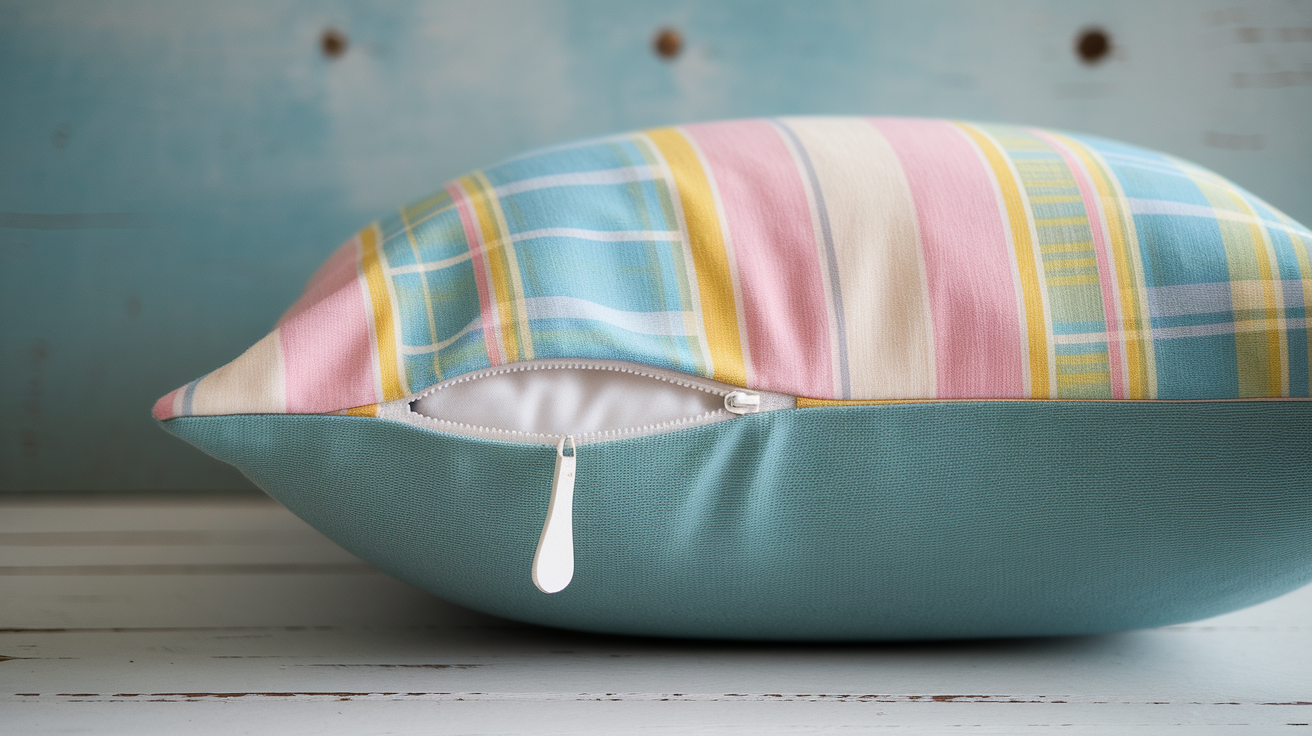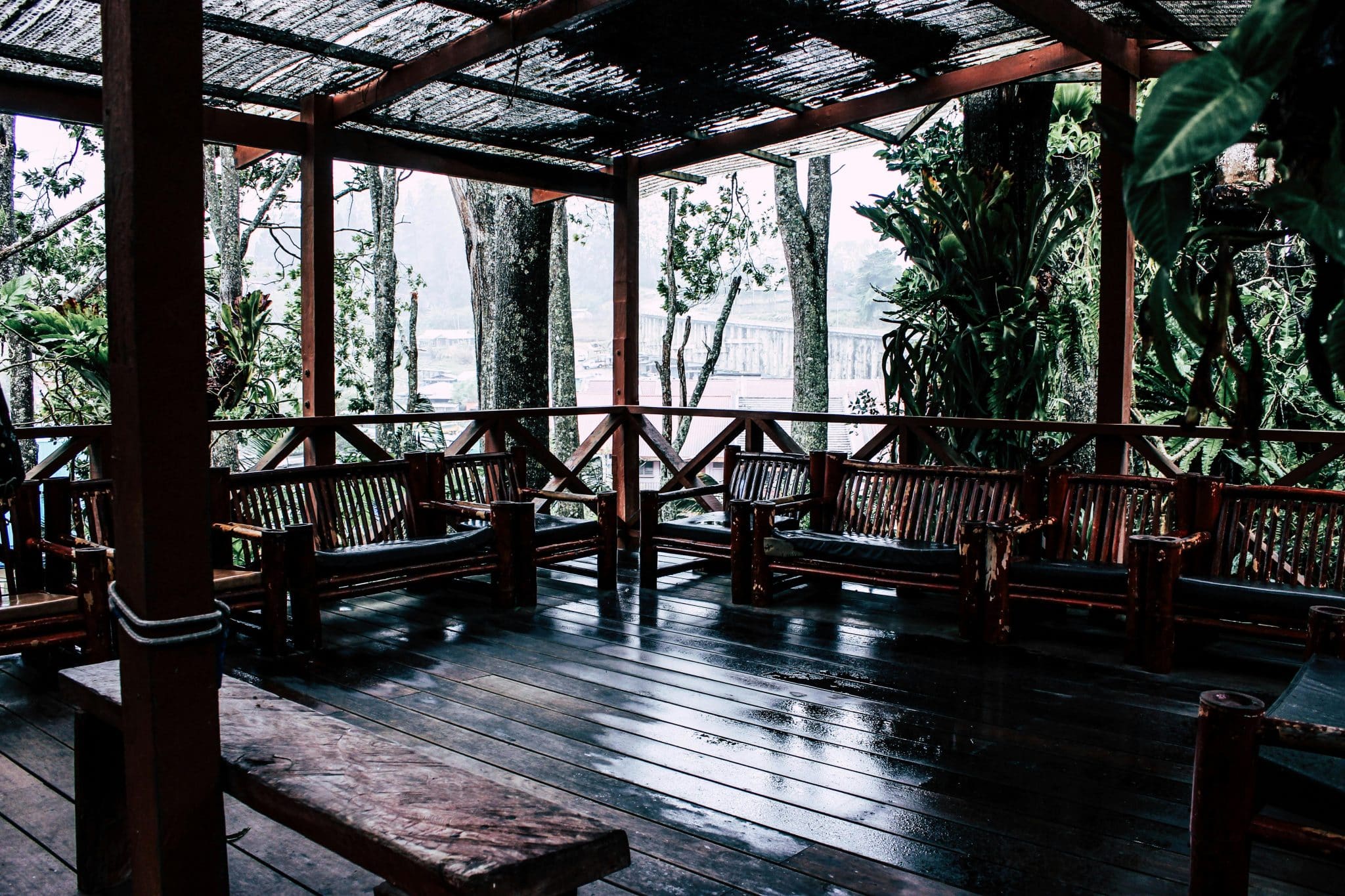Have you ever tried to clean a stained pillow? It’s no fun. A pillow with a zipper allows you to remove the cover and wash it.
Many people think sewing zippers is hard. It’s not! With a few simple steps, you can add this useful feature to your pillows at home.
What if you could make all your favorite pillows easy to clean? What if your decorative pillows stayed fresh for years?
In this guide, I’ll show you how to sew a zipper into a pillow. You’ll learn the exact method that works every time. No fancy tools are needed!
By the end, you’ll wonder why you ever bought pillows without zippers. Ready to make your pillow life easier? Let’s get started with the basics.
Why You Should Consider Adding a Zipper to Your Pillow?
Adding a zipper to your pillow offers many benefits for your home. Let’s look at the top reasons why this small change makes a big difference.
First, think about how often you clean your pillows. With a zipper, you can take off the cover in seconds. This means you can wash it whenever you want without any hassle. Coffee spills and pet hair won’t be a problem anymore!
A zipper also gives your pillow a neat, clean look. When guests see your handmade pillows, they’ll notice the careful work that went into them. The finished product looks much more put-together than other closing styles.
Some other key benefits include:
- Longer life for your pillows as you can wash the covers often
- Easy stuffing changes when you want a firmer or softer pillow
- Simple fabric updates without making a whole new pillow
- Less waste since you keep the inner pillow and change only the covers
The small effort of adding a zipper pays off with years of easy pillow care.
Step-by-Step Guide on How to Sew a Zipper in a Pillow
Follow these eight simple steps to add a functional zipper to any pillow – perfect for beginners and experienced sewers alike.
Step 1: Gather Your Tools and Materials
Before you start sewing, you need to collect all the right tools. Having everything ready makes the process smooth and fast. Let’s look at what you’ll need for this project.
The quality of your materials affects the appearance of your pillow. Good fabric and a sturdy zipper will help your pillow last longer. Take time to pick items that match your needs.
| Item | Description | Why You Need It |
|---|---|---|
| Fabric | Enough to cover pillow with extra for seams | Forms the pillow cover |
| Pillow Form | Your desired size | Helps determine fabric dimensions |
| Measuring Tape | At least 60 inches long | Ensures accurate fabric cutting |
| Scissors | Sharp fabric scissors | Cuts fabric cleanly |
| Fabric Marker | Washable marker | Makes visible marks for sewing |
| Zipper | 2-4 inches shorter than pillow width | Creates the opening |
| Sewing Machine | With straight stitch function | Sews the pieces together |
| Zipper Foot | Attachment for machine | Allows stitching close to zipper teeth |
| Pins | At least 20 straight pins | Holds fabric in place |
| Thread | Matching your fabric color | Connects the pieces |
| Seam Ripper | Small tool with hook | Fixes any mistakes |
Once you have all these items, set them up in your work area. Make sure you have good lighting and enough space to spread out your fabric. Clear off any extra items from your table to avoid confusion.
Step 2: Cut Your Fabric
Measure your pillow form and add 1 inch to each measurement for the seam allowance. For an 18-inch pillow, cut two 19-by-19-inch fabric squares. Mark with a fabric marker first to ensure straight cuts.
Run a zigzag stitch along all edges to prevent fraying while you work. If you don’t have this option, use pinking shears or a fray checker instead. This small step will save you a lot of frustration later.
Step 3: Prepare the Zipper Area
Getting the zipper placement right makes your pillow look neat. Lay both fabric pieces right sides together. The bottom edge is where your zipper will go.
Measure 2.5 inches from each side along the bottom edge. Mark these spots with your fabric marker. This is where your zipper will start and end. Pin the two pieces of fabric together along this edge to keep them from shifting.
Step 4: Sew the Bottom Seam and Basting Stitches
Now, you’ll create the bottom seam where your zipper will go. Set your sewing machine to a medium-length stitch (about 2.5 on most machines).
Start sewing from one edge toward your first marked spot. Use a 1/2 inch seam allowance. When you reach the first mark, switch to a very long stitch length (about 5 on most machines). This is your basting stitch. Continue with this long stitch between your two marked spots. The basting stitch creates a temporary hold that you’ll remove later to make room for the zipper.
Step 5: Insert the Zipper
Place your sewn pieces flat, seam facing up. Position the zipper face-down on the open seam, with the teeth directly over the basting stitches. Pin in place.
Attach the zipper foot to your machine. Sew close to the zipper teeth all the way around. When you reach the zipper pull, stop with the needle down, move the pull, and continue sewing. Form a complete rectangle around the zipper to secure it properly.
Step 6: Remove Basting Stitches
Now it’s time to open up the zipper section. Take your seam ripper and carefully pull out the long basting stitches. Work slowly to avoid cutting the fabric or permanent stitches.
Once all basting stitches are removed, brush away loose threads with your fingers. Then, test the zipper by opening and closing it a few times to ensure it works properly.
Step 7: Sew the Sides Together
Keep your fabric pieces with the right sides together and the zipper partially open. This opening will let you turn the cover right side out later.
Pin the three remaining sides of your pillow, making sure the corners are squared. Sew each side using a ½-inch seam allowance. When you reach a corner, leave the needle down, lift the foot, rotate the fabric, and continue sewing the next side.
Step 8: Finish the Pillow
Before turning your pillow cover’s right side out, trim the excess fabric at the corners. Cut at a 45-degree angle about ¼ inches from the corner stitches. This reduces bulk and helps the corners look sharp.
Turn the cover’s right side out through the open zipper. Use a pencil or chopstick to gently push out each corner until it’s nice and pointed. Smooth all edges with your fingers.
Insert your pillow form through the zipper opening. Start with one corner and work your way around. Once the form is fully inside, close the zipper. Your zippered pillow is now complete and ready to use!
Video Tutorial
For a detailed video, check out How To Sew A Zipper ( Into A Pillow)! by Jann Newton | Sew Often
Common Mistakes to Avoid When Sewing Zippers
- You are using the wrong zipper size for your pillow. For the best fit, pick one that’s 2-4 inches shorter than your pillow’s width.
- I forgot to switch to a zipper foot. Regular presser feet can’t get close enough to the zipper teeth for proper stitching.
- Sew too close to the zipper teeth. Leave about a 1/8-inch space so the zipper can move freely without catching the fabric.
- Do not open the zipper before sewing the remaining sides. Otherwise, you will not be able to turn the pillow right side out.
- Rushing through the corners. Take time to pivot properly at each corner for clean, professional-looking edges.
- Pulling the fabric while sewing. Let the feed dogs move the fabric naturally to avoid puckered seams around the zipper.
Conclusion
You’ve now learned how to add a zipper to your pillow! This small change makes a big difference in how you use and clean your pillows.
Remember, practice helps with zipper sewing. Your first try might not be perfect, but each attempt will improve your skills. The key steps are measuring twice, using basting stitches, and sewing slowly around tricky spots.
With your new zippered pillow, you can wash the cover whenever needed. No more stuck-on stains or dusty pillows! You can also switch covers for different seasons or moods without buying new pillows.
Want to try more sewing projects? This skill works for cushions, pouches, and bags, too. The methods stay the same, just the size changes.
Enjoy your clean, fresh pillows and the satisfaction of creating something useful with your own hands!
















